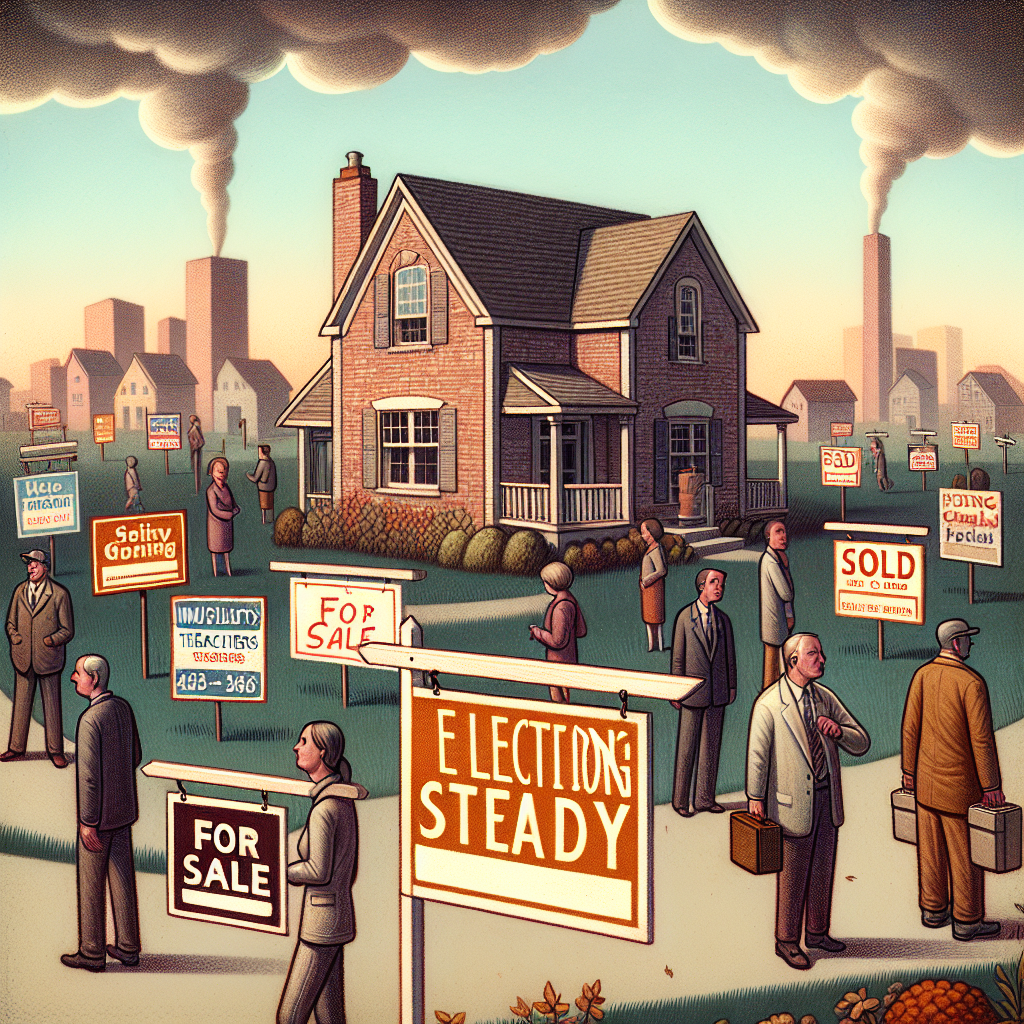Real Estate Market Holds Steady Amid Election Period
The real estate market is often seen as a barometer of economic health, and its performance during election periods can provide valuable insights into broader economic trends. Historically, election years have been associated with uncertainty, which can lead to fluctuations in the housing market. However, recent data suggests that the real estate market is holding steady despite the political turbulence. This article explores the factors contributing to this stability and examines the implications for buyers, sellers, and investors.
Understanding the Election Year Effect
Election years are typically characterized by uncertainty, as potential changes in government policies can impact economic conditions. This uncertainty can lead to cautious behavior among consumers and investors, often resulting in a slowdown in major financial decisions, including real estate transactions. However, the current election period appears to be an exception to this trend.
Factors Contributing to Market Stability
Several factors are contributing to the resilience of the real estate market during this election period:
- Low Interest Rates: Central banks have maintained low interest rates to stimulate economic growth, making borrowing more affordable for homebuyers. This has kept demand for housing strong.
- Supply Constraints: A shortage of housing inventory in many regions has created a competitive market, keeping prices stable or even rising despite potential political uncertainties.
- Remote Work Trends: The shift towards remote work has led to increased demand for homes in suburban and rural areas, as people seek more space and a better quality of life.
- Investor Confidence: Real estate remains a favored asset class for investors seeking stable returns, particularly in uncertain times. This has bolstered market activity.
Case Studies: Regional Market Performance
To illustrate the stability of the real estate market, let’s examine a few regional case studies:
California
Despite being a politically active state, California’s real estate market has shown remarkable resilience. According to the California Association of Realtors, home prices have continued to rise, driven by strong demand and limited supply. The tech industry’s growth in areas like Silicon Valley has further fueled this trend.
Texas
In Texas, the real estate market has remained robust, with cities like Austin and Dallas experiencing significant growth. The state’s business-friendly environment and influx of new residents have contributed to a thriving housing market, even during the election period.
Florida
Florida’s real estate market has also held steady, with a notable increase in demand for properties in coastal areas. The state’s appeal as a retirement destination and its favorable tax policies have attracted both domestic and international buyers.
Implications for Buyers, Sellers, and Investors
The stability of the real estate market during the election period has several implications:
- For Buyers: Low interest rates present an opportunity to secure favorable mortgage terms, but buyers should be prepared for competitive bidding in high-demand areas.
- For Sellers: The current market conditions are favorable for sellers, with strong demand and limited inventory supporting higher prices.
- For Investors: Real estate remains an attractive investment, offering potential for stable returns and portfolio diversification.
Conclusion
In conclusion, the real estate market’s stability amid the election period is a testament to its resilience and the underlying factors supporting it. Low interest rates, supply constraints, remote work trends, and investor confidence have all played a role in maintaining market equilibrium. While political uncertainties remain, the real estate market continues to offer opportunities for buyers, sellers, and investors alike. As we move forward, it will be crucial to monitor these trends and adapt strategies accordingly to navigate the evolving landscape.



